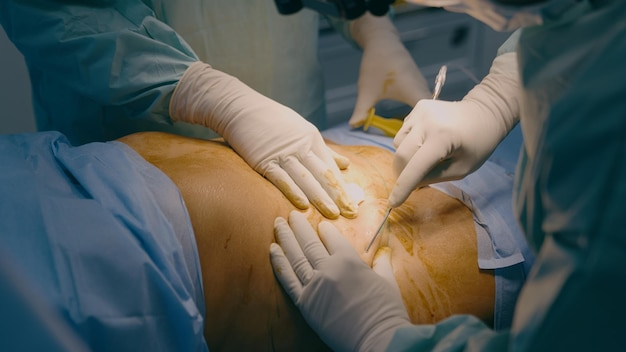Pelviacetabular surgery might sound like a mouthful, but it’s a type of operation that can make a big difference in people’s lives. This surgery focuses on fixing problems with the pelvis and hip joint area. It can be a game-changer for anyone dealing with issues in these parts of the body. Over the years, there have been several advancements in techniques that make these operations safer and more effective. From surgical tools to recovery care, every aspect of this surgery is improving.
When considering pelviacetabular surgery, understanding the benefits is key. Knowing how these surgeries work can help patients feel more secure about the process. Patients can expect better outcomes and smoother experiences thanks to modern improvements. Also, recognizing what happens after the surgery is vital. People often have questions about the recovery time and can feel anxious about potential risks.
This guide offers an in-depth look into the purpose of the surgery and how it benefits patients. We’ll dive into how these procedures are performed and what makes them essential. Plus, we’ll cover how to prepare for surgery and what the recovery process looks like. Whether you’re considering this surgery or just curious about its benefits, this guide has got you covered.
Understanding Pelviacetabular Surgery: Procedures and Purposes
Pelviacetabular surgery involves treating issues with the pelvis and hip joint. Why do people need it? It’s often due to accidents or conditions people are born with. If someone slips and falls, they might injure their pelvic area. Accidents can lead to something called pelvic acetabular fractures. These are breaks in the hip area that can be very painful and problematic.
Sometimes, people have congenital abnormalities. This means they were born with a condition affecting the pelvis or hip joint. Surgery can help correct these issues. For example, some babies are born with a hip joint that isn’t formed right. As they grow, this can cause pain or trouble walking.
In these cases, pelviacetabular surgery steps in to fix the problem. The goal is to help patients get back to normal life with less pain and more comfort. Surgery can realign broken bones and repair damaged areas. This helps reduce pain and improve movement. Such surgical procedures often ensure patients lead a more active and pain-free life.
The Benefits and Success of Pelviacetabular Surgery
The benefits of pelviacetabular surgery are plenty. First off, patients often find significant relief from pain. Living with hip or pelvic pain isn’t easy. It makes daily activities like walking a chore. Surgery can ease this pain by fixing the problem right at its source.
Another benefit is improved mobility. Being able to move without pain opens up a world of possibilities. Activities like running, biking, or even just walking become enjoyable again. For many, this change drastically improves their quality of life.
Then there’s the matter of the success rate. Thanks to new techniques and tools, this type of surgery is very effective. Surgeons today can do more with less risk. Most procedures result in positive outcomes, meaning fewer complications and a smoother recovery. These operations can set the stage for long-term health improvements, keeping people active and engaged in life.
Pelviacetabular surgery also plays a crucial role in preventing further health issues. By addressing hip or pelvis issues early on, patients can avoid future injuries or complications.
Navigating Recovery and Potential Complications
After surgery, the road to recovery begins. Understanding the pelviacetabular surgery recovery process can ease a patient’s mind. Knowing what to expect and how to handle it can make things smoother. Here’s a glimpse of what recovery usually looks like:
- Recovery Timelines:
- Immediately after surgery, patients might spend a few days in the hospital.
- Within a few weeks, most people can expect to walk with assistance.
- Complete recovery might take several months, but progress is gradual.
- Postoperative Care Practices:
- It’s important to follow doctor’s orders closely.
- Keeping the surgical area clean and free from infection is crucial.
- Regular check-ups help monitor healing progress and catch potential problems early.
- Recommended Exercises and Rehabilitation:
- Gentle exercises help regain strength and mobility.
- Physical therapy is often a key part of healing. A therapist guides safe movements, avoiding strain on the healing area.
Of course, every surgery comes with risks. Knowing the potential complications of pelviacetabular surgery is essential. Common challenges might include:
- Infections: These can occur if proper care isn’t taken.
- Blood Clots: These can form since movement is initially limited post-surgery.
- Nerve or blood vessel damage: Surgeons work carefully, but there’s always a slight risk.
Understanding these possible hurdles helps in preparing for them. It’s not about scaring oneself, but being informed.
Post-surgery, focusing on the right postoperative care for pelviacetabular surgery is key. This involves:
- Getting enough rest.
- Eating nutritious meals to aid healing.
- Staying hydrated.
- Following doctor or therapist advice.
Pelviacetabular surgery recovery asks for patience and adherence to guidance. It might take time, but the outcomes are worth the wait. By the end of the journey, many patients find themselves moving freely and living without pain.
Ultimately, while the thought of surgery can be daunting, the benefits of pelviacetabular surgery far outweigh the temporary discomfort and challenges of recovery. Armed with knowledge and the right approach, patients can look forward to reclaiming their mobility and leading a healthier, more active life.
